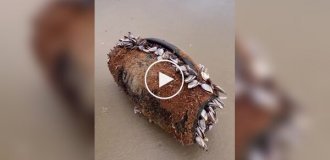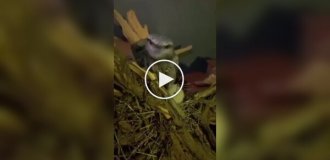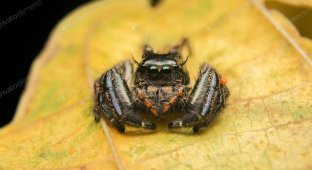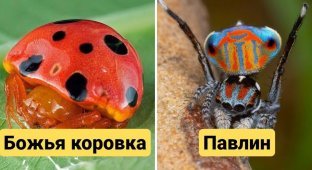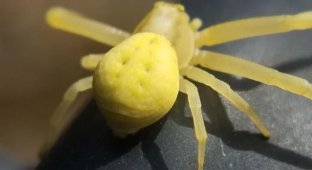Secrets of Successful Hunting: 13 Clever Tricks to Avoid Predators (14 photos)
In the animal kingdom, there are some very inventive hunters - they don't rely on chance, but use a variety of tricks to catch their prey. For example, there are spiders that throw lassos, ants that set deadly traps, turtles that catch fish on their own tongues... and this is only part of the list. 
1. Flashing Lures 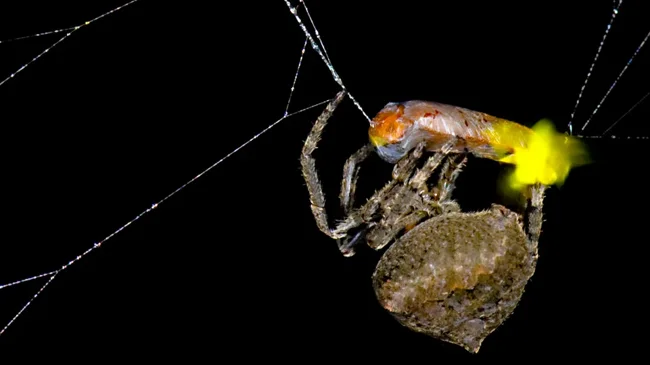
In China, there lives an amazing spider Araneus ventricosus, which uses fireflies to attract prey to its web. Fireflies, especially during the mating season, communicate using light pulses that are produced in the flashlights at the end of their abdomen.
In the species Abscondita terminalis, males emit multiple flashes of light that emanate from two segments of the abdomen, while females emit single-pulse signals from one segment.
The spider A. ventricosus, noticing this difference, exploits it. After capturing a male, it injects venom into the middle segment of his body, which causes the firefly to emit single pulses that mimic the signals of females. This, in turn, attracts more males to the web, increasing the spider's chances of catching a prey.
2. Hypnosis by a Cuttlefish 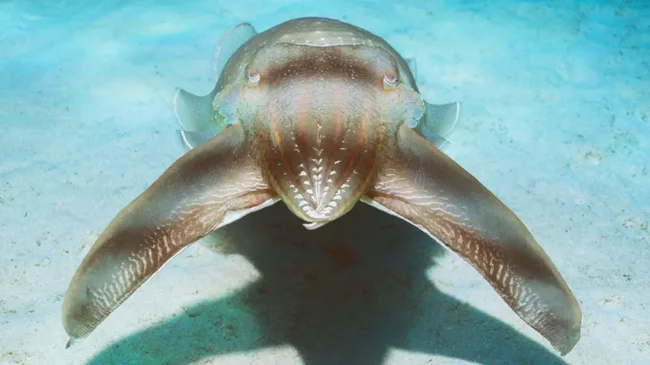
Among the coral reefs of the Indo-Pacific region, the broad-browed cuttlefish hypnotizes its prey by creating pulsating light shows on its skin. Like other cephalopods, the broad-browed cuttlefish (Sepia latimanus) uses specialized skin cells known as chromatophores to change the color and texture of its body, blending in with its surroundings. As it hunts fish and invertebrates, it creates a series of contrasting rhythmic stripes on its skin.
According to a 2017 study, these stripes can stun prey as the cuttlefish approaches it undetected. It then extends its feeding tentacles to pull the stunned victim into its beak-like mouth. The broad-browed cuttlefish is the second-largest cuttlefish species, reaching weights of over 10 kilograms.
3. Crocodiles That Disguise Themselves as Rags 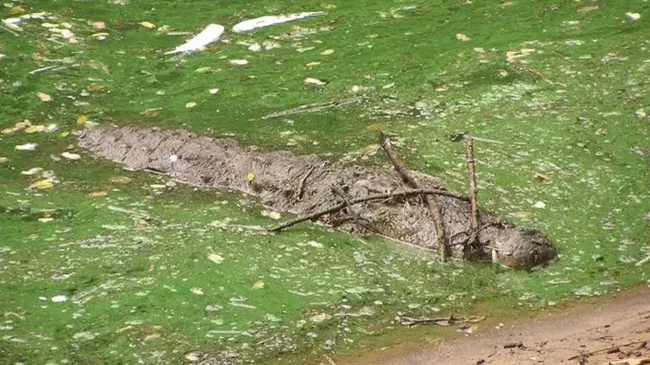
Alligators and crocodiles can use sticks to attract birds looking for material to build their nests. Researchers have observed this behavior in American alligators (Alligator mississippiensis) at alligator parks in Louisiana.
The alligators will erect sticks on their heads, wait for a curious bird to come within reach, and then jump up. This behavior is most often seen in areas where the birds are actively nesting, especially between March and May, when nesting season is in full swing.
4. Hidden Trapdoors 
Trapdoor spiders are masters of ambush and surprise. They build underground burrows where they hide and wait for unsuspecting prey. The best known are the trapdoor spiders, a family called Ctenizidae, which construct silken flaps over their tunnels.
These spiders dig their tunnels under busy insect paths and camouflage them with leaves and dirt. The spider sits patiently, holding the trapdoor slightly ajar, until it feels the vibration of a passing insect. It then leaps out of its tunnel, snatching its prey with its front legs and pedipalps, antenna-like appendages located near its mouth.
These spiders share some features with their close relatives, the tarantulas (Theraphosidae), but are less hairy and much smaller.
5. Bubble Nets 
Large humpback whales known as Megaptera novaeangliae swim in circles beneath schools of fish, creating bubbles that form a net that surrounds the fish and herds them into tight groups. This hunting method, known as "bubble net feeding," is being studied by various groups of scientists and may vary slightly among whale populations.
6. Ambush Ants 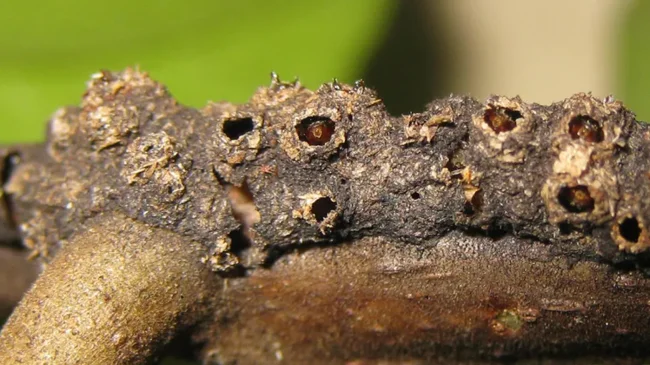
Ants can do amazing things when they work together. Azteca brevis is a species of ant found only in tropical Central America. They build their black, scabby nests outside on the stems of small to medium-sized trees.
Worker ants bore several holes into these nests and position themselves unnoticed just beneath them with their mandibles open. They then grab the limbs of unsuspecting insects as they walk along the perforated stems. They hold and immobilize the insect, then cut it into small pieces.
7. Spider with a Lasso 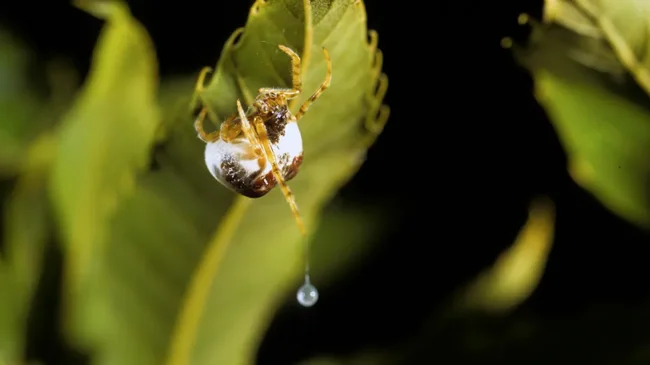
One spider, inspired by Wonder Woman, has come up with a clever way to catch prey. We are talking about the female bolas spider (Mastophora hutchinsoni), a predator that uses a sticky lasso to catch its prey.
The female spider secretes a chemical scent that mimics the pheromones of female moths, which attracts males. When a male is within reach, the female spider spins a long thread of silk with a sticky club-shaped end to drop onto the moth's wings in mid-air.
Female spiders are quite large, reaching 2 cm in length, with huge and clearly visible white abdomens that have humps. This is probably necessary for them to cope with heavy prey. Males, on the other hand, are very small, only 1.6 mm in length, which is due to the lack of need to hunt large prey.
8. Fishing Lines and Glowing Backs 
In the dark caves of New Zealand, tiny creatures create mesmerizing traps using bioluminescent magic. These glow worms are not true worms, but the larvae of adult fungus gnats known as Arachnocampa luminosa.
The larvae live in the upper parts of caves or in damp bushes. From their mouths, they shoot long “lines” of mucus, up to 50 centimeters long, which they use to catch small flying insects such as flies, moths, and midges. According to a 2016 study, a single nest can produce up to 150 of these threads.
The larvae attract flies with their blue-green bioluminescent backs. The “fishing line” is then wound directly into their mouths. Arachnocampa luminosa only feed during this phase of their life cycle, which can last up to nine months.
9. A Snake Impersonating a Spider 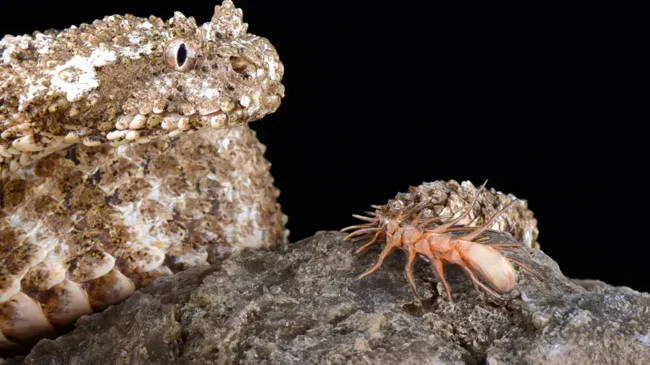
Spider-tailed horned vipers (Pseudocerastes urarachnoides) are amazing creatures found in Western Asia. As their name suggests, they have a unique tail that resembles a spider. This tail ends in a bulbous structure covered in elongated scales that stick out, creating the illusion of a spider's body.
When the snake is lying on the ground, its spider-like tail trembles, attracting the attention of lizards, rodents, and even birds, who mistake it for a potential meal. Once the prey is distracted by the "spider" on the snake's tail, it pounces on its victim with lightning speed.
10. Imitating the cries of a baby prey 
Margays (Leopardus wiedii), small wild cats found in Central and South America, use the innate instinct of adults to protect their young to their own ends. They make sounds similar to the cries of baby tamarins (Saguinus bicolor), which attracts the attention of adult monkeys, who rush to the aid of the baby.
Locals in the Amazon jungle have long heard these nocturnal cries, but the first scientific observation of this phenomenon was recorded in 2009. Locals told scientists that the imitation of sounds is a common hunting method for cats in the area.
11. A bird that uses bait to catch fish 
The green heron (Butorides virescens), found in North and South America, gets its food in much the same way as humans. The green-brown birds sit over marshes and throw pieces of bread, insects, and feathers into the water to attract curious fish. When the fish gather in this place, the heron snatches them out of the water with its sharp beak.
12. Fake-tongued turtle 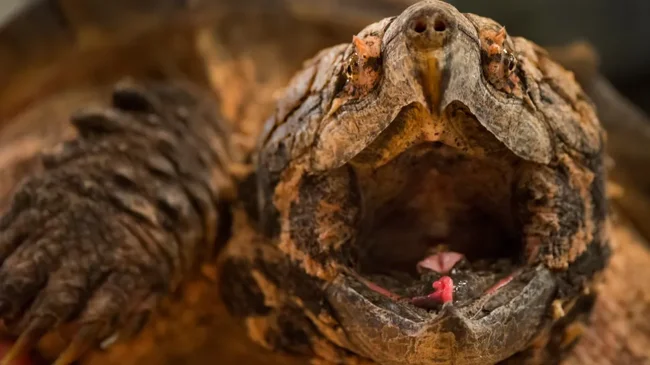
Alligator snapping turtles (Macrochelys temminckii) are the largest species of freshwater turtles, found exclusively in American rivers. They get their name from the large ridge on their backs that makes them look like an alligator.
Alligator snapping turtles have a spiked shell and a dull body color that allows them to blend in with the muddy bottoms of rivers. They sit motionless underwater with their mouths wide open, their tongue resembling a tiny worm that wriggles to attract fish. The fooled fish quickly ends up in the mouth and is eaten.
13. Traps in the sand 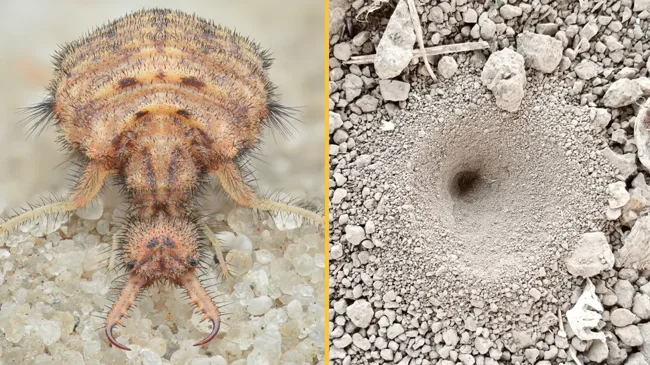
In hot, dry places, the deadly anteater larvae (Myrmeleontidae) create sandy pits that inevitably trap small insects, mostly ants.
In places with loose soil or sand, the anteater moves in a circular motion, creating a funnel-shaped hole. The larva burrows into the bottom of the hole and patiently waits for an insect to fall into it. The larva then grabs the falling insect with its jaws. If the prey tries to escape, the larva violently throws sand with its head, creating mini-landslides that pull the insect back in.


